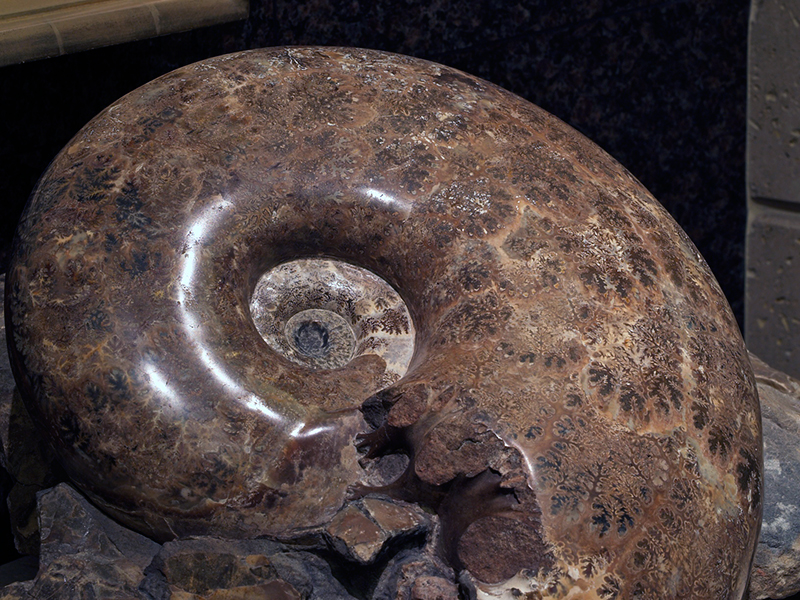(single, small specimen)
Locality: La Mision, Baja California, Mexico
Geologic Range: Late Cretaceous (100-60 million years ago)
Approximate Age of Specimen: 65 million years ago
Description:
This Pachydiscus Catarinae (literally, ³thick disc of Caterina²) represents a fossil of one of the last ammonite lines which met with extinction approximately 65 million years ago. As the only surviving relation of the ammonites, the chambered nautilus of today's tropical seas offer an approximate idea of how a completed ammonite may have appeared.
Specimens such as this prize example occur in the narrow interval of the Rosario Formation of La Mision, Baja California. They are found in concretionary boulders that range in size from 4 ft. in diameter to 10 ft by 8 ft by 6 ft. Unfortunately only 10% of these boulders contain ammonites and a fraction of these contain specimens approaching the quality of this specimen. The presence of the shell fragments in the concretionary matrix supports the hope that an ammonite will be found within a concretion.
As a result of the compressive stress exerted on the buried ammonite, the outermost hollow chamber (which houses the body) collapses because it lacks the buttressing walls which fortify the other chambers used for gas-liquid transfer and buoyancy regulation. It is this collapse that yields shell shards that are the telltale guide for field excavation.
